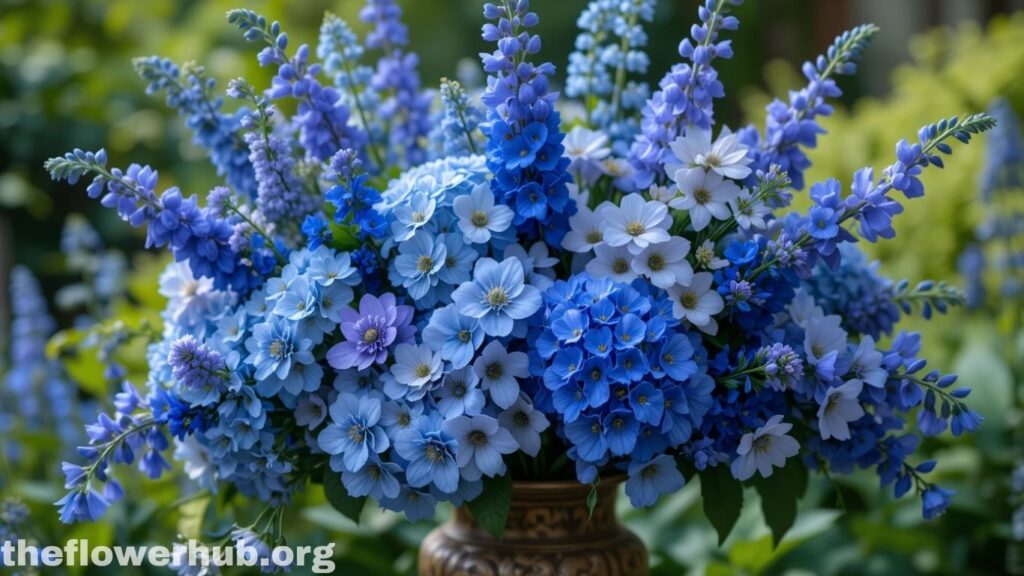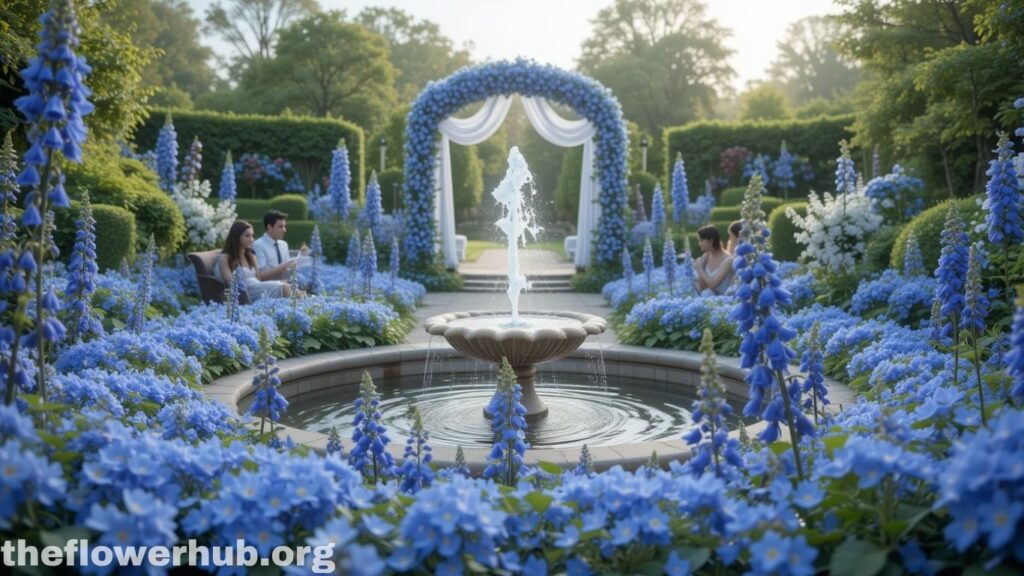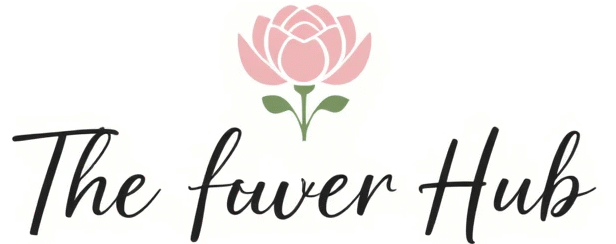The blue flowers has captured human imagination for centuries, from ancient myths to modern gardens. The vibrant color symbolizes the unknown, longing and the quest for the unattainable.” In this complete guide, we’ll dive into the world of the blue flowers, covering everything from its history and meaning to its many varieties and how it is grown. So let’s gaze behind the petals of this perceived magical bloom.
What is the Blue Flowers Like?
In the natural world, the blue flowers occupies a special realm. True blue, unlike red, pink or yellow, is rare in plants. That’s because blue pigments do not naturally occur in most flowers. Instead, plants need to tinker with chemicals such as anthocyanins and cell pH to catch the glow from blue light.

Table of Contents
🌼 Fun fact: Less than 10% of flowering plants have blue blossoms!
The scarcity of such a color in nature is one reason that the blue flowers metaphor evolved to be a symbol of the unattainable — a wonderful metaphor for, say, dreams or aspirations that are right there but out of reach.
🌿 10 Fabulous facts
1️⃣ “The animals’ true blue pigmentation is hardly ever seen. But a true blue hue, a rarity in nature, is harder to come by — only a tiny fraction of flowers can produce the chemical marriage that is necessary to make the color blue.
2️⃣ The azure bloom can indicate a longing or a hope. The azure blossoms, as a symbol of eternal yearning and the search for meaning, is of course rooted in German Romantic literature.
3️⃣ It serves a purpose to attract pollinators. Bees, with their ultraviolet vision, are particularly sensitive to blue.
4️⃣ A lot of cerulean blossoms are incorporated into folklore and legend. From the ancient Egyptians’ divine blue lotus to Celtic legends of bluebells, these flowers have magical connections.
5️⃣ The science of the soil affects blue hues. Plants, such as hydrangeas, are blue in acidic soils — an exceptional natural trick.
6️⃣ The sapphire-hued blooms is a source of inspiration for artists and poets. The beauty of blue flowers has been celebrated by writers like Goethe and painters like Van Gogh.
7️⃣ Sky-colored blossoms may help with your mood! Blue has calming and peaceful qualities to it.
8️⃣ They have to be worked on by gardeners to grow. Since blue is an elusive bloom color, hybridizers will spend years developing bluer selections through crossbreeding.
9️⃣ They appear in contemporary symbolism. Today, the indigo bloom is often associated with inspiration, trust, and loyalty.
🔟 They’re part of ceremonies and decorations. Sky-toned blossoms are trending in weddings, memorials and cultural celebrations.
Popular Types
Here’s a table that presents some popular blue flowers, their scientific names and meanings in brief:
| Variety | Botanical Name | Meaning | Bloom Season | Native Region |
|---|---|---|---|---|
| Bluebell | Hyacinthoides non-scripta | Humility, constancy | Spring | Europe |
| Blue Lotus | Nymphaea caerulea | Rebirth, spiritual awakening | Summer | Egypt |
| Delphinium | Delphinium elatum | Positivity, dignity | Summer | Northern Hemisphere |
| Himalayan Blue Poppy | Meconopsis betonicifolia | Rarity, mystery | Summer | Himalayas |
| Blue Hydrangea | Hydrangea macrophylla | Apology, gratitude | Summer | Japan |
| Lobelia | Lobelia erinus | Devotion, charm | Spring to Fall | Southern Africa |
| Morning Glory | Ipomoea tricolor | Affection, mortality | Summer | Americas |
| Gentian | Gentiana spp. | Strength, virtue | late summer | Europe, Asia |
How to Plant and Care
Sunlight Requirements
Many blue flowering plants, including delphiniums and blue poppies, require full sun or partial shade. Over-shading will decrease flowering.
Soil Preferences
💡 Tip: Acidic soil usually produces more intense blue shades. Take some of that compost they should be mulched with, add to the area making sure to adjust pH if necessary with sulfur or organic matter.
Drainage is key, too, because waterlogged roots can injure delicate plants.
Watering
Soil should remain moist but not soggy. Blue flowers like lobelia and hydrangea prosper with the addition of regular irrigation, especially during dry periods.
Fertilization
Apply balanced, slow-release fertilizer in the growing season. Just take care not to over-fertilize — it can diminish the size of the bloom or the color of the bloom.
Pruning & Maintenance
Deadhead any flowers after they fade, to promote more flowering. Tall blue flowers like delphinium are staked to prevent wind damage.
The Blue Flowers in Art, Myth and Literature
Literary Symbol
This blue flowers was immortalized in the Romantic period, most notably in Novalis’ novel the Heinrich von Ofterdingen (1802), where it is associated with an unending quest for meaning for humanity.
In Visual Art
Writers such as Goethe and Shakespeare have sung the praises of violets, and painters like Monet, Van Gogh and O’Keeffe often incorporated into their work. The hazy color invites you to be contemplative and calm.
In Ancient Cultures
- Egypt: The blue lotus represented the sun, rebirth and the afterlife.
- Celtic lore: Bluebells were thought to chime in fairy parties.
- China: Blue gentians symbolized the strength and persistence.
Use in Modern Life
Weddings & Events: Blue flowers are a popular choice for brides and party planners as these calming, romantic flowers are used to make wedding bloom looking gorgeous, to say nothing of the decorations.

Gardens: Planted in borders rockeries or containers, blue flowers provide a sense of tranquility to any garden.
Healing gardens: Since blue is the color of peace, blue flowers find their place in therapeutic garden designs.
Symbolic gifts: Blue flowers can symbolize trust, loyalty, and sometimes a sincere apology.
Final Table
| Category | Details |
|---|---|
| Relative of the days; moderate to strong light requirements | SunlightFull sun to partial shade |
| Soil | Well-drained loamy slightly acidic |
| Water | Evenly moist, but not waterlogged |
| Symbolism | Hope, fidelity, inspiration |
| Notable Varieties | Bluebell, Blue lotus, Delphinium, Blue hydrangea, Blue poppy |
| Uses | Gardens, art, weddings, centers for healing |
FAQs
Why are blue flowers so rare?
It’s difficult for plants to generate blue pigments. Instead, they combine chemically to alter the reflection of light, making it seem blue.
Whats the most famous blue flower?
While the bluebell and blue lotus are globally ubiquitous, the Himalayan blue poppy is valued for its novelty.
Is it possible to grow blue flowers indoors?
Yes! Plants such as lobelia and blue hydrangea can do well in a pot, with correct light and water.
What is the best soil for blue hydrangeas?
The deeper blue hues prefer acidic soil (pH under 6).
Are blue flowers real or dyed?
True blue flowers do exist, but many cut blooms sold as blue — a blue rose, for example — are artificially dyed.
What is the meaning of blue flowers in dreams?
They are frequently representative of hope, peace and psychological purging.
Conclusion
From the blue lotus of ancient Egypt to the flax and lilies that grow on the Canadian prairie, the limpid petals of the blue flower hold a particular fascination in the human imagination. It is rare in the natural which is why we find our deepest dreams and desires so rare as well.
Whether you gaze upon it in a painting, cultivate it in your garden or gift it to someone, the blue flower represents something greater — hope, hocus-pocus and the beauty of the exceptional.
💙The next time you spot a blue bloom, pause and appreciate how fabulous it is. After all, you’re witnessing one of nature’s most epic and magical creations.
Bonus Tip:
If you plan to incorporate blue flowers in your garden, mix them with silver or white foliage plants. That mix really makes the blues pop and does harmonize well.
